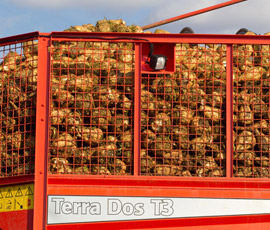Seed choice dilemma for beet growers

Tests to see why sugar beet failed to emerge properly this spring are taking longer than expected, scientists have said.
Researchers were due to reveal initial results early this month from tests to identify the cause of erratic crop establishment across eastern England.
But the British Beet Research Organisation, which is overseeing various experiments to pinpoint the cause of the problem, said a conclusion remains some way off.
The delay raises the prospect of sugar beet growers having to choose seed for the 2014 crop without knowing what led to this year’s emergence problems.
The BBRO has been looking at different scenarios – including the impact of the weather, seed priming and pelleting. This spring was the coldest for more than 50 years.
But it remains unclear why some sugar beet crops failed and others did not.
BBRO lead scientist Mark Stevens said he was still waiting for “two or three datasets” to come in from researchers in the UK and overseas.
“Until I’ve got that, it is too early to say anything,” Dr Stevens told Farmers Weekly. Once the information arrived, it would be appraised, reviewed and assessed, he added.
Dr Stevens said he hoped results would be available before the end of the summer.
“It is important that we do it thoroughly, properly and robustly,” he said.
Dr Stevens said an “awful lot of effort” was going into work at home and abroad to clarify what caused the situation faced by farmers.
“We have done standard germination tests and we have taken [seed] down to 4ºC. We are in that process at the moment – both here and in continental Europe.”
The BBRO was using external partners to support and compliment its own work – but this had involved inserting additional work into partners’ work programmes.
Farmers were forced to redrill sugar beet this spring after crops emerged with poor plant populations, lack of vigour and poorly developed root systems.
Growers reported sugar beet crops coming out of the ground with fewer than 40,000 plants/ha, rather than the targeted 100,000 plants/ha.
Where affected crops did emerge, plant stems and cotyledons were distorted and twisted. In some cases, there was little root system and no main tap root.
Problems were reported across a number of sugar beet varieties. Growers unable to redrill continue to face issues, with some crops exhibiting mutated roots.

